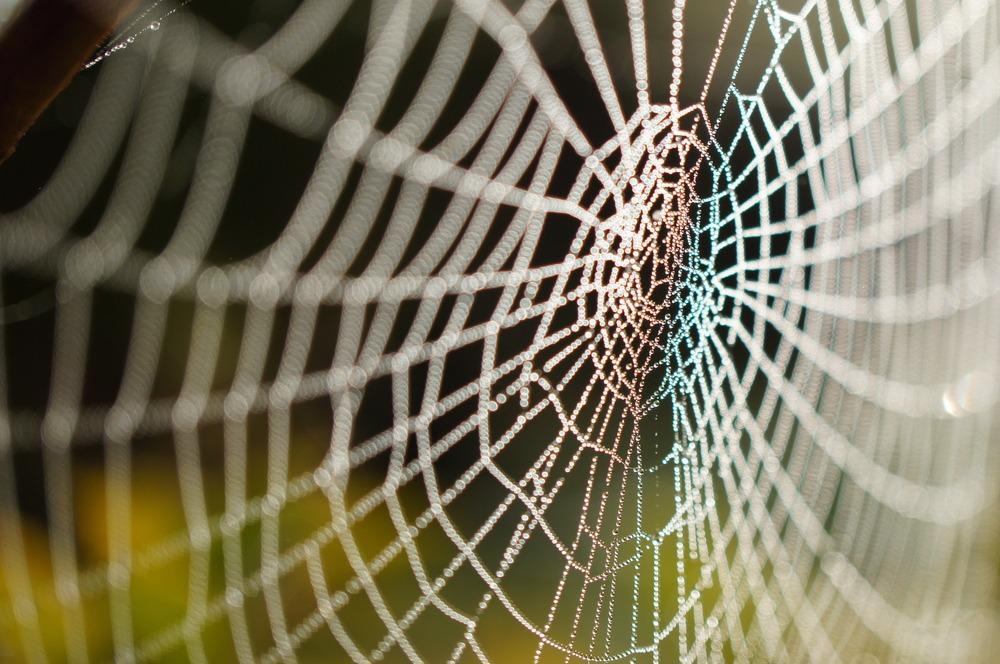In a study published recently in the journal ACS Applied Materials & Interfaces, a strain detector inspired by nature was developed employing scorpions and spider webbing as coupling bioengineered concepts, which are well-known for their super sensitive sensory capability and architectural robustness.

Study: Ultrasensitive, Highly Stable, and Flexible Strain Sensor Inspired by Nature. Image Credit: stephen Carrier/Shutterstock.com
Flexible Strain Sensors
Due to their high scope for use in fields such as healthcare and movement sensing and human-machine interactions, elastic electronic equipment has become a significant sector of the contemporary electronics market.
Wearable elastic strain gauges have gained popularity amongst elastic electronics owing to their simple structures and ease of fabrication. Nevertheless, there are several obstacles that prevent the mainstream use of elastic strain gauges.
In the healthcare sector and motion sensing, for instance, considerable responsiveness is essential for identifying the microscopic skin tension induced by microscale muscular movements. Furthermore, increased steadiness and longevity are often needed in industrial settings for improved service assurance. Unfortunately, it is still a significant hurdle for elastic strain gauges to achieve super-high sensitivities while also demonstrating extraordinary stabilities and endurance.
Previous Attempts of Fabricating Effective Flexible Sensors
Thus far, several scientists have struggled to create highly effective pliable sensors. Most of the research has concentrated on enhancing active substances or the development of sensory frameworks to increase detection capability. For example, scientists have focused efforts on enhancing the compliance of various composites to improve the stability and robustness of the detectors. Although the improved active materials used in such research improve sensory effectiveness, they are costly and entail a sophisticated fabrication procedure.
To increase sensory capabilities, several studies have focused on appropriate biologically inspired sensory frameworks like interconnecting micropillars, hierarchical fish scales, biologically shaped sea urchins, octopus suckers, and several other designs.
Fracture structures have been established as among the pliable detector architecture solutions that may boost responsiveness. Nonetheless, fracture structures are always created using techniques such as pre-stretching/stress-release, natural drying, mechanical deformation, and so on.
The harmful, unpredictable, and multi-propagating fracture might have a negative influence on the robustness and longevity of the electronics. As a result, it is required to investigate a novel sensory architecture in order to achieve high responsiveness, endurance, and robustness all at the same time.
Taking Inspiration from Some of Nature’s Deadliest
Scorpions, which are among the most hypersensitive arthropods, can sense vibration signals on the micro-and nanoscale with pinpoint accuracy. The scorpion's slit sensillum can detect minuscule vibrations created by a grain of sand about five centimeters away, which could be used as potential inspiration for the creation of super-sensitive detection devices.
The robustness of the spiderweb, on the other hand, can withstand loads in a variety of ranges, buffer force of impact, adjust for damages, and retain functioning integrity, which motivates the enhancement of the bionic sensor's robustness. Therefore, combining the two natural architectural properties mentioned above is critical for boosting the effectiveness of elastic strain gauges. Several studies have shown that a V-shaped notch may achieve concentrated stress in the spike location.
Approach Followed in the Study
The biomechanical connection system suggested in this study is a combination of the V-shaped architecture influenced by the hypersensitive vibration detection capability of a scorpion's slit sensillum and the complex framework inspired by the architectural robustness of spider webbings. As a framework development technique, the V-shaped notch and spiderweb structure are chosen to increase the responsiveness and robustness of the elastic strain gauge.
Key Findings
The team developed in this work a bionic elastic strain gauge influenced by the scorpion slit sensillum's hypersensitive detection capability and the spiderweb pattern's prominent architectural integrity, which may increase responsiveness and steady operational life at the same time. FEA was used to examine detectors with an RVG design modeled after the spiderweb and an LVG architecture.
The detector's gradient shielding with the spider webbing reticular architecture was observed, and the shielding might prevent deterioration resulting from stretching and flexing. The biologically inspired strain gauge demonstrated a very responsive and highly stable performance over 80,000 cycles of continual loading and unloading. The developed sensor could be used in human movement sensing and sound detection, with implementation possibilities such as wearable electronic devices and smart robotics.
Further Reading
Wang, J., Liu, L. et al. (2022). Ultrasensitive, Highly Stable, and Flexible Strain Sensor Inspired by Nature. ACS Applied Materials & Interfaces. Available at: https://pubs.acs.org/doi/10.1021/acsami.2c01127
Disclaimer: The views expressed here are those of the author expressed in their private capacity and do not necessarily represent the views of AZoM.com Limited T/A AZoNetwork the owner and operator of this website. This disclaimer forms part of the Terms and conditions of use of this website.